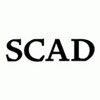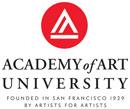
| School | State |
|---|---|
| UCLA Animation Workshop | California |
| Savannah College of Art and Design | Georgia |
| School of the Art Institute of Chicago | Illinois |
| Ball State University | Indiana |
| University of Southern California | California |
| Virginia Commonwealth University | Virginia |
| California Institute of the Arts | California |
| Rochester Institute of Technology | New York |
| DePaul University | Illinois |
| The Ohio State University | Ohio |
Animation is a highly competitive field that is expected to add some 3,900 new jobs between 2014 and 2024. This represents a 6% increase in employment, which is about as fast as the average for all occupations. Despite job growth, says the Bureau of Labor Statistics (BLS), “there will be competition for job openings because many recent graduates are interested in entering the occupation. Opportunities should be best for those who specialize in a specific type of animation or in a specific skill, such as drawing or computer programming.” However, “an increased demand for computer graphics for mobile devices, such as smart phones, will lead to more job opportunities.”
What all of this means is, creativity alone won’t get your foot in the door. Today’s animators must have superior technical, artistic, communication, and time-management skills to enter this growing field. While these skills may be obtained through an undergraduate program, graduate programs help students develop advanced skills in these areas by providing two full years of focused effort in the studio. In addition, some of the best MFA programs typically offer access to prime internships, as well as some of the top instructors in the field who are successful animators themselves. Further, an MFA in Animation can provide the credentials required to teach, as many animation instructors fund their films by teaching. Fortunately, there are a growing number of animation programs around the world looking to fill tenure-track teaching positions.
Besides all of this, an MFA can lead to higher earnings and greater employment stability. In fact, according to the BLS, master’s degree holders average around $1,341 per week (median) and the unemployment rate for this group is just 2.4%. By comparison, bachelor’s degree holders average $1,137 per week (median) and the unemployment rate is 2.8%. In the world of animation, the highest earners (typically those with years of experience and likely an advanced degree and other credentials) average between $88,190 and $113,600 per year. The average salary for animators overall isn’t too shabby either. The median pay is $63,970.
So, if you’re convinced that an MFA in animation is the way to go, the following schools are ones to consider. Please note that the schools are not listed in any particular order.
 UCLA Animation Workshop, Los Angeles, California
UCLA Animation Workshop, Los Angeles, California
Founded in 1948 by Disney animator William Shull, UCLA Animation Workshop is one of the nation’s oldest advanced animation training programs. Part of the UCLA School of Theater Film and Television, Department of Film, Television and Digital Media, the Workshop is a “complete animation facility, which includes a fully operational studio, with traditional animation desks, 16mm film animation cranes, and Video Lunchbox pencil test units.” The Workshop also houses The Walter Lantz Digital Animation Studio, which was designed for thesis students to do research and production.
Students can expect to meet world-renowned guest instructors and lecturers during the course of the program, and they will have the opportunity to complete an entire film on their own. According to the program website, the “one person, one film” philosophy “allows each filmmaker complete control over his or her film: its concept, purpose, content, viewpoint, art, form, audience, and value.”
UCLA Animation Workshop is competitive and admits approximately 12 new MFA students each year in the Fall quarter. There are approximately forty students in all in the Workshop. Graduates have landed positions at Pixar Animation Studios, and every major animation studio in Southern California. They have gone on to direct features such as The Simpsons Movie and Monster House, and have directed with Tim Burton, producing the feature film 9.
 Savannah College of Art and Design (SCAD), Savannah, Georgia
Savannah College of Art and Design (SCAD), Savannah, Georgia
Savannah College of Art and Design (SCAD) offers two advanced degrees for aspiring animators—an MA and MFA in Animation. The MFA is available at the school’s Atlanta, Savannah, and eLearning campuses and the MA is offered at the Savannah and eLearning campuses. The Savannah campus features more than 800 computers “networked to reduce render times, and recycled tire flooring to cut down on static electricity.”
In Atlanta, “the SCAD Digital Media Center offers an in-house theater, studio environment and green screen lab in a 60,000-square-foot facility.” Besides state-of-the-art facilities, SCAD hosts signature events that allow students to network, meet guests, and show their work. The Savannah Film Festival is on the SCAD calendar as well and attracts more than 40,000 guests over eight days. Student attendees benefit from the film screenings, workshops, celebrity panels, and lectures.
Graduates of the MFA in Animation program at SCAD “get recruited and hired by the best of the best.” Just a few include Bento Box Entertainment, Digital Domain, Disney, Fisher-Price, Make Visual Studios, MovieStop, Ronin Film, Vicarious Visions, and Zenimax Online Studios.
 School of the Art Institute of Chicago (SAIC), Chicago, Illinois
School of the Art Institute of Chicago (SAIC), Chicago, Illinois
The School of the Art Institute of Chicago (SAIC) is one of the nation’s top accredited independent schools of art and design. The school houses the Film, Video, New Media, and Animation Department (FVNMA), which offers an MFA in Studio. The program features rigorous curriculum that requires successful completion of advanced courses in Computer Animation, Puppet Animation, Drawing for Animation, Installation, Storyboarding, Moving Image, Art Games, and Sound and Optics, to name a few.
As part of the renowned Art Institute of Chicago, MFA students have access to a range of resources such as The Donna and Howard Stone Gallery for film, video, and new media located in the museums Modern Wing, and The Gene Siskel Film Center, “one of the country's premiere screening venues dedicated to promoting alumni, student, and faculty work.” Access to The Video Data Bank, which includes the work of more than 500 artists and 5,500 video art titles, is also part of the program. Students have access to the Conversations at the Edge (CATE) Series, which is a weekly series of screenings, artist talks, and performances that provides access to “compelling contemporary media artists.”
Within the SAIC FVNMA Department, students also have access to state-of-the-art production studios and a screening theater. Through instruction from faculty members that work in the field, an “innovative” curriculum, and access to resources not found at many schools, students in this NASAD-accredited MFA program “engage in formal experimentation, technical innovation, and critical investigation in all forms of media-based work.”
 Ball State University, Muncie, Indiana
Ball State University, Muncie, Indiana
The MFA in Animation program at Ball State University is designed for students “with prior knowledge of fundamental animation concepts and techniques.” As such, applicants must have an undergraduate degree in Art, Animation, Film, Graphic Design, Illustration or other Visual Art area. The program, which furthers students’ abilities in animation filmmaking, focuses on modern and traditional animation techniques, film production, and storytelling through the creation of a short film. Studio classes cover Experimental Animation, Preproduction, Animation Methods, Film Production Pipeline - 3D, Film Production Pipeline - 2D, and Film Production Pipeline - Stop Motion.
Offered through the School of Art, the MFA program offers access to two new computer labs, 40 Dell workstations and Cintiq monitors, a 20-node render farm, and faculty with industry experience at Disney and EA (Electronic Arts) games. Students also have the opportunity to show their work at the local, regional, and national venues, and many students land internships at prestigious companies and design firms.
Admission to this NASAD-accredited program is granted once a year and coursework begins in the Fall semester.
 University of Southern California (USC), Los Angeles, California
University of Southern California (USC), Los Angeles, California
The University of Southern California (USC) has been teaching animation techniques to students since 1933, making it one of the oldest animation programs in country. Home to USC Cinematic Arts, which houses the prestigious John C. Hench Division of Animation & Digital Arts (DADA), the school offers a three-year MFA in Animation and Digital Arts that enrolls just 14 students once a year in the Fall. This competitive program offers an exclusive internship at TBS (Tokyo Broadcasting System) that allows students to produce original projects such as cell phone animation, animation for public areas in Tokyo, and projects that screen on Japanese television.
The MFA program “focuses on animation production, including a wide range of techniques and aesthetic approaches, from hand-drawn character animation to state-of-the-art interactive digital animation. While embracing traditional forms, the program strongly encourages innovation and experimentation, and emphasizes imagination, creativity and critical thinking.” Ongoing workshops in traditional and digital media, as well as new technologies provide additional educational opportunities for students. All students will complete a thesis that may be viewed at the coveted Hench-DADA MFA Thesis Screening event.
 Virginia Commonwealth University (VCU), Richmond, Virginia
Virginia Commonwealth University (VCU), Richmond, Virginia
Virginia Commonwealth University (VCU) offers an innovative program for those seeking an advanced degree in Animation. It’s called Kinetic Imaging or “KI.” The program, which is dedicated to Animation Art, Video, and Sound, is offered through the School of the Arts (VCU-Arts), Department of Kinetic Imaging. According to the Department, the MFA in Fine Arts/Kinetic Imaging (KI) “expands the field of video art, experimental animation, sound art and emerging media through the production of works of art that explore the artist’s relationship to culture and society.”
Tools of choice range from low-tech explorations to hi-tech, says VCU-Arts. “Media used encompass a broad range including 3D computer graphics, hand-drawn imagery, interactive environments, sound recording and composition, and hi-def video.” In addition, students may emphasize in a variety of areas such as Virtual Interactive Worlds, Web Technologies for Media Artists, and Socially Engaged Media. Because the curriculum is so diverse, graduates of the MFA program are well prepared to work in animation, as well as a variety of other media-related industries.
Initiated in the Fall of 2007, the MFA Fine Arts/KI program is studio-based and consists of a two-year curriculum of 60 academic credits. This NASAD-accredited program is competitive and supports just 4-8 graduate students.
 California Institute of the Arts (CalArts), Valencia, California
California Institute of the Arts (CalArts), Valencia, California
The graduate program at CalArts leads to an MFA in Experimental Animation that prepares students to be “leading figures in the world of animation.” Offered through the School of Film/Video, the MFA program gives students the opportunity to showcase their work at the school’s Bijou Theater, at the Roy and Edna Disney/CalArts Theater, and at other venues throughout the Los Angeles area. Producers and other film and television professionals regularly attend these events. This just one of the many perks CalArts MFA students enjoy.
Students also have access to cutting-edge new technologies and established mentors to help them create animated productions that are ready to hit the screen. Students can expect to rub elbows with successful visiting artists and animators from across the country and they will complete interdisciplinary projects with visual and performing artists across all of CalArts. Students also have they have the opportunity to teach Community Arts Partnership (CAP) workshops and classes at art centers and public schools throughout Los Angeles County.
Students entering this NASAD-accredited program should have prior experience in animation. Courses offered include, but are not limited to, 2D Drawing, 2D and 3D Computer Animation, Stereoscopy, Motion Capture, Installation, Programming, Pre-visualization Skills, Production Design, and under the camera methods such as paint on glass, working directly on film, and stop-motion.
 Rochester Institute of Technology (RIT), Rochester, New York
Rochester Institute of Technology (RIT), Rochester, New York
Rochester Institute of Technology (RIT) offers a Film and Animation MFA with four options—2D Animation, 3D Animation, Production, and Screenwriting. All options require two years of coursework and a thesis project. Housed in the School of Film and Animation (SOFA), the program gives students to opportunity to complete several films, beginning with a complete film the first year. Students have access to state-of-the-art production facilities where they can create “live-action production, screens, 2D, 3D or stop motion animation that is unique.” Students also have the support of “highly specialized faculty in photography, imaging science, computer science, information technology, and printing.”
This NASAD-accredited program highlights an array of unique electives such as perception, sensitometry, and new media, as well as opportunities for independent studies, internships, and concentrations.
 DePaul University, Chicago, Illinois
DePaul University, Chicago, Illinois
The College of Computing and Digital Media (CDM) at DePaul University offers an MFA in Animation that uses the cohort model. This gives students the opportunity to work alongside their peers throughout the program. Students receive “intense and rigorous training in the history, critical artistic issues, and fundamental principles that are necessary for animation artists,” and they will produce films throughout the program that will be challenged by faculty in critiques.
CDM says that during the process, “students will be urged to develop a personal vision and push the limits of their abilities and the potential of animation as an expressive medium.” Students can expect to complete several projects such as a collaborative short animated film, an animated short film, and the Thesis Animation project, to name a few. At the end of the third year, students will present their thesis exhibition a gallery or theater.
To enter this competitive MFA program, students must have an undergraduate degree in Animation, Film, Art, Graphic Design, Illustration or other Visual Art area. Please note that DePaul also offers an MA in Animation that prepares students for a career in 3D Character Animation, Traditional Animation, Computer Game Art, or Visual Effects.
 The Ohio State University, Columbus, Ohio
The Ohio State University, Columbus, Ohio
The Ohio State University offers an advanced animation program that prepares students to work in high-level positions in the Digital Animation and Interactive industries, and teach at colleges and universities. Offered through the Department of Design, the curriculum philosophy “is one of learning through experimentation and practice.” According to the Department, “Year One is constructed as an Exploration year, in which students choose new experiences that will enhance their current understanding of new media. Year Two is a Practice and Application year which demands continued exercising and rehearsal of new practices. Year Three results in Synthesis, in which students demonstrate a deep understanding of the craft and its context.”
Accredited by NASAD, this studio and technology-intensive program leads to a MFA in Design with a Digital Animation and Interactive Media Track.
Note: Program information was obtained from each schools official website. All information was accurate at the time this article was published.
More Programs to Consider:
Sources
"Earnings and Unemployment Rates by Educational Attainment." Employment Projections. U.S. Bureau of Labor Statistics, 15 Mar. 2016. Web. 09 Aug. 2016.
"Summary - Multimedia Artists and Animators." Occupational Outlook Handbook. U.S. Bureau of Labor Statistics, 17 Dec. 2015. Web. 09 Aug. 2016.
"27-1014 Multimedia Artists and Animators." Occupational Employment and Wages, 2015. U.S. Bureau of Labor Statistics, 30 Mar. 2016. Web. 08 Aug. 2016.



